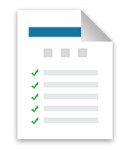The initial shout for help has been removed as a separate step for simplicity and to reduce delay in starting CPR and getting an AED - a key evidence-based intervention linked to the Chain of Survival.
A bystander may shout for help at any stage during the initial assessment and subsequent resuscitation attempt. Most (80%) of cardiac arrests occur in the home and the rescuer is likely to know if others are present and whether a shout for help is indicated. Observational data report that in most of out-of-hospital cardiac arrests in the home only a single bystander is present.
Whenever possible the call to emergency services should be made from the patient’s side to allow a real-time assessment of the patient’s status by the dispatch operator and for them to provide CPR instruction if required.


